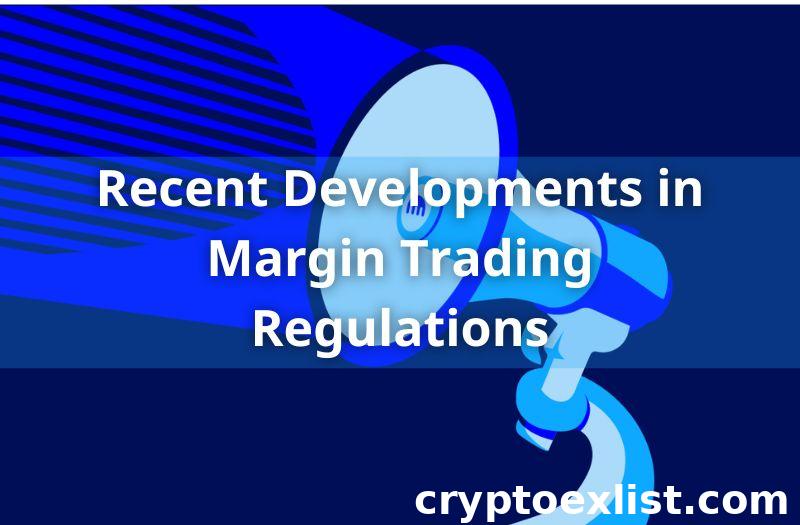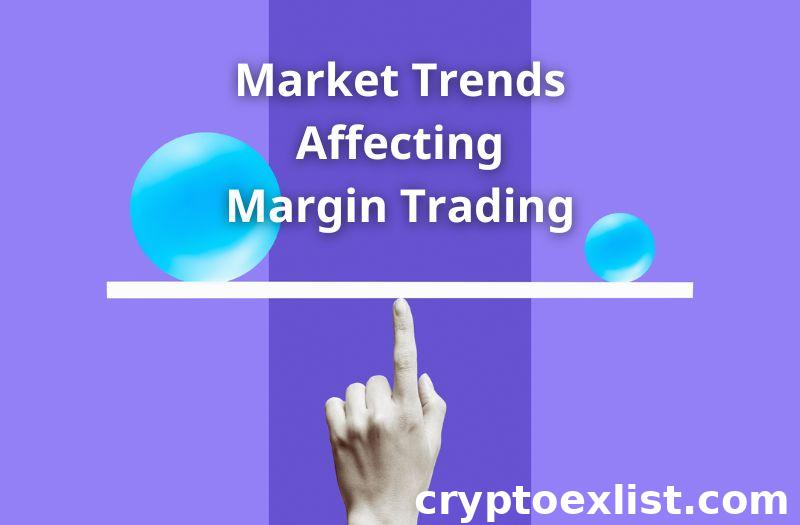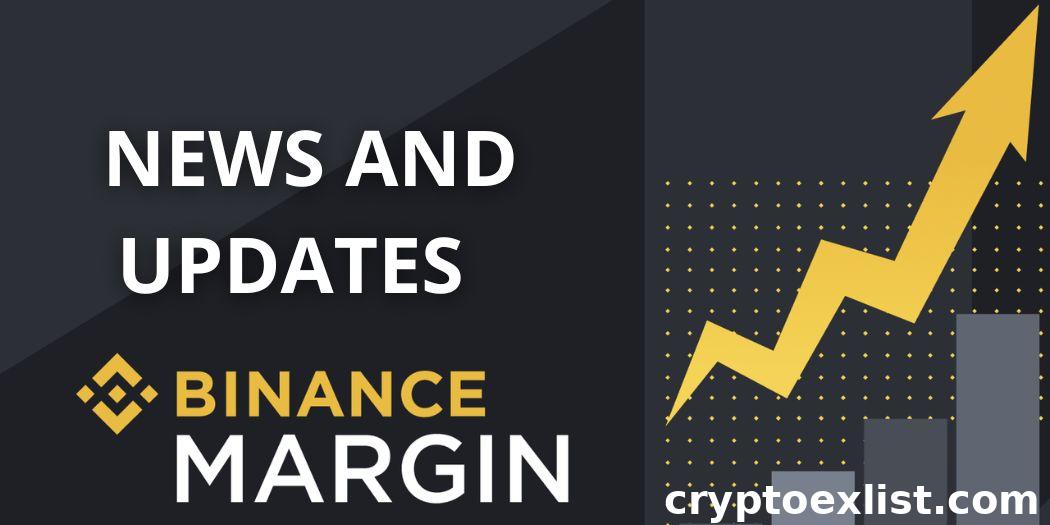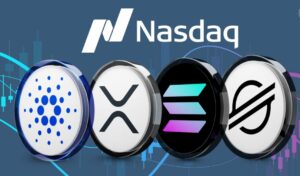
Margin trading on Binance has quickly become a popular tool for traders looking to amplify their gains, but it’s essential to stay updated on the latest news, trends, and regulations. Whether you’re a beginner or an experienced trader, understanding the evolving landscape of margin trading is crucial for success. In this comprehensive guide, we’ll explore the most recent developments in regulations, market trends, and technological advancements and offer insights from industry experts and global perspectives on margin trading. From managing margin calls to leveraging AI-driven strategies, this guide will equip you with everything you need to navigate Binance margin trading confidently.
Recent Developments in Margin Trading Regulations
As the cryptocurrency market matures, regulatory bodies across the globe are placing increasing focus on ensuring that margin trading is conducted responsibly and transparently. For traders using Binance, it’s important to stay updated on recent developments in margin trading regulations, as they can have a significant impact on trading strategies and the broader market landscape. In this section, we’ll break down the new regulatory frameworks, how these changes affect traders, and what the future may hold for margin trading regulations.
Overview of New Regulatory Frameworks
Recent years have seen a surge in regulatory oversight of margin trading, especially in the cryptocurrency space. Governments and financial authorities in countries like the U.S., Europe, and Asia have introduced new laws aimed at protecting investors while maintaining market stability. Many of these regulations focus on limiting leverage, ensuring that platforms like Binance provide clear risk disclosures, and requiring users to complete Know Your Customer (KYC) processes. Binance has adapted to these regulations by implementing features such as tiered leverage limits, mandatory risk awareness quizzes, and strict identity verification protocols. While some may view these as additional steps, they ultimately provide a safer trading environment, especially for new traders.
Impact of Regulation Changes on Traders
For traders on Binance, the impact of these regulatory changes is mixed. On one hand, the introduction of lower leverage limits helps reduce the risk of significant losses, particularly for inexperienced traders. This shift encourages more responsible trading, as users are now required to better understand the risks associated with margin trading before accessing higher levels of leverage. However, experienced traders who are accustomed to using high leverage may find the new restrictions limiting. Additionally, the mandatory KYC procedures add an extra layer of security but may slow down the account setup process for new users. Despite these challenges, the overall benefit is a safer and more stable trading environment, which is crucial in the volatile world of cryptocurrency.
Future Trends in Margin Trading Regulations
Looking ahead, margin trading regulations are expected to evolve further as governments and regulators continue to monitor the growth of the cryptocurrency market. One likely trend is the global standardization of regulatory frameworks, which could provide consistency for traders across different regions. In the future, we may also see more focus on automated risk management systems, where platforms like Binance use advanced algorithms to monitor users’ trading behavior and adjust leverage or margin requirements based on real-time risk assessments. Additionally, as decentralized finance (DeFi) gains traction, regulators may shift focus toward governing decentralized margin trading platforms, introducing a new wave of rules and challenges for the broader crypto trading community. Staying informed about these changes will be key for traders looking to navigate the evolving landscape of margin trading successfully.

Market Trends Affecting Margin Trading
The cryptocurrency market is dynamic and ever-changing, with various factors influencing traders’ decisions, especially when it comes to margin trading. For those new to Binance and margin trading, it’s important to stay updated on the market trends that can impact trading strategies and outcomes. From the current market sentiment to the influence of economic indicators and advancements in technology, these elements play a pivotal role in shaping how margin traders make their moves.
Current Market Sentiment
Market sentiment refers to the overall attitude of traders and investors toward a particular asset or the market as a whole. In the world of cryptocurrency, sentiment can shift rapidly due to a range of factors such as news, regulations, and investor behavior. Currently, we’re seeing mixed sentiment in the crypto market—while some traders remain bullish, others are more cautious due to regulatory developments and market volatility. For margin traders on Binance, this sentiment directly affects their strategies. In a bullish market, many traders are willing to take on more leverage, anticipating price increases to maximize profits. Conversely, in a bearish market, traders may opt for lower leverage or short positions, expecting prices to fall. Understanding market sentiment is key to making informed decisions in margin trading, as it often dictates market direction and volatility.
Influence of Economic Indicators
Beyond the crypto space, global economic indicators such as interest rates, inflation, and employment data can also significantly influence margin trading. When central banks around the world adjust interest rates or announce monetary policy changes, these shifts can ripple through the financial markets, including cryptocurrencies. For example, when interest rates are low, traders may be more willing to borrow funds for margin trading because the cost of borrowing is lower. On the flip side, rising inflation or market uncertainty can lead to heightened volatility, which requires margin traders to adjust their risk tolerance and strategies accordingly. For Binance margin traders, staying aware of these economic trends can help them anticipate market movements and make more calculated decisions.
The Role of Technological Advancements
Technological advancements continue to play a crucial role in shaping the margin trading landscape. As the crypto industry evolves, platforms like Binance are integrating more sophisticated tools and algorithms to help traders manage risk and enhance their trading experience. From AI-driven analytics to automated trading bots, these technologies can assist margin traders in making more informed decisions and executing trades with precision. For example, Binance’s advanced risk management systems monitor users’ margin levels in real-time, ensuring that traders are alerted to any significant changes in their positions. Additionally, the rise of decentralized finance (DeFi) and blockchain technology is offering new avenues for margin trading on decentralized platforms, providing traders with more flexibility and control over their assets. By leveraging these technological advancements, margin traders can stay ahead of the curve and take advantage of new opportunities as they arise.

Insights from Industry Experts
When it comes to margin trading on Binance, learning from experienced traders and industry experts can provide invaluable insights, especially for newcomers looking to sharpen their strategies. With the crypto space constantly evolving, many successful margin traders have shared their experiences and predictions for the future, offering guidance that can help you navigate the complexities of margin trading. Whether it’s advice from seasoned traders or future predictions for the industry, these insights offer a roadmap to making smarter trading decisions.
Interviews with Successful Margin Traders
Successful margin traders often emphasize the importance of strategy and risk management. In interviews with top traders, one common theme is that success doesn’t come from chasing profits but from understanding the market and having a disciplined approach to trading. For example, many experienced traders recommend starting with lower leverage to minimize risk, particularly in the highly volatile crypto market. They also stress the importance of using stop-loss orders to protect against sudden market swings. Traders who have thrived on Binance often attribute their success to staying informed about market trends and taking the time to learn how to manage borrowed funds effectively. By following the advice of these seasoned professionals, beginners can avoid some of the common pitfalls and develop a more sustainable trading approach.
Predictions for the Future of Margin Trading
Looking ahead, industry experts predict exciting changes on the horizon for margin trading. As cryptocurrency continues to mature and gain broader acceptance, margin trading is expected to become more sophisticated and accessible. Experts believe that with the advancement of automated trading systems, traders will have access to more intuitive tools that can help them better analyze market trends and manage risk. Additionally, with increasing regulatory oversight, margin trading could become safer and more transparent, attracting more institutional investors to platforms like Binance. Another anticipated trend is the integration of decentralized finance (DeFi) platforms with margin trading, providing users with even more flexibility in how they trade and borrow funds. For newcomers, these predictions suggest that now is a great time to learn the fundamentals of margin trading, as the tools and technologies available will only continue to improve, making it easier for traders of all experience levels to participate in the market.
Global Perspectives on Margin Trading
Margin trading on Binance is a feature used by traders all around the world, but how it’s approached can vary greatly depending on the country and culture. From different regulatory environments to unique cultural attitudes towards risk and leverage, understanding these global perspectives can provide valuable insights for new margin traders. Whether you’re trading from Europe, Asia, or the Americas, it’s important to recognize how different regions approach margin trading to make the most informed decisions.
Margin Trading Practices in Different Countries
Margin trading regulations and practices differ significantly from country to country, with some nations offering more flexibility while others impose strict regulations to protect traders. For example, in the United States, margin trading is tightly regulated, with platforms like Binance required to follow specific rules such as limiting leverage and enforcing strict Know Your Customer (KYC) protocols. On the other hand, countries in Asia, such as Singapore and Japan, tend to have more lenient margin trading environments, where higher leverage is allowed, and traders have more options for borrowing funds. In Europe, regulations are evolving, but most countries require platforms to offer lower leverage ratios, particularly for retail investors. Understanding the margin trading landscape in your country is crucial, as it can impact how you trade, the level of risk you can take on, and the specific features available on Binance.
Cultural Attitudes Towards Risk and Leverage
Cultural attitudes towards risk and leverage play a major role in how margin trading is perceived and practiced across the globe. In countries like the United States and parts of Europe, traders tend to have a more cautious approach to margin trading, focusing heavily on risk management and often opting for lower leverage ratios to protect their capital. In contrast, traders in regions such as Asia or Latin America may take a more aggressive approach, using higher leverage to maximize potential profits, often driven by a culture that embraces financial risk-taking. These cultural differences in risk appetite can also influence how traders approach margin trading strategies. For example, in risk-averse cultures, traders may rely more on stop-loss orders and portfolio diversification, while in high-risk cultures, traders may be more willing to hold onto leveraged positions for longer periods in hopes of bigger returns. As a new trader on Binance, it’s essential to reflect on your own risk tolerance and learn from these global perspectives to adopt a trading style that aligns with your financial goals and comfort level.

Advances in Margin Trading Technology
The landscape of margin trading has evolved significantly, thanks to technological advancements that are making it easier, faster, and smarter for traders to operate. For those new to margin trading on Binance, these developments provide exciting tools to help you trade more efficiently and minimize risk. Two major areas where technology is reshaping the game are algorithmic trading and the growing influence of artificial intelligence. Understanding these innovations can give you a competitive edge as you begin your margin trading journey.
Algorithmic Trading and Margin
Algorithmic trading has revolutionized the way traders engage with the market, and this is especially true for margin trading. On Binance, algorithmic trading allows you to execute predefined strategies automatically, without constantly monitoring the markets. These algorithms can analyze market data, identify patterns, and execute trades on your behalf, often at speeds much faster than a human trader could achieve. For margin traders, this technology can be a game-changer, as it helps reduce the emotional component of trading while also optimizing trade execution to capitalize on market movements. Whether you’re going long or short, using algorithms for your margin trades can help you stay ahead of the curve by making decisions based on real-time data, rather than gut feelings.
The Role of Artificial Intelligence
Artificial Intelligence (AI) is playing an increasingly important role in margin trading, offering traders more predictive analytics and risk management tools. Binance has integrated various AI-powered features that assist margin traders by analyzing massive amounts of market data to forecast potential trends and risks. These AI systems can identify patterns that may be invisible to the naked eye, offering more accurate signals on when to enter or exit a trade. Additionally, AI tools help manage risk more effectively by dynamically adjusting your leverage or margin requirements based on market conditions. For new margin traders, this means you can leverage AI to make more informed decisions and reduce the risk of significant losses during volatile market swings. As the technology continues to develop, AI-driven insights will likely become even more integral to successful margin trading strategies.
Conclusion
Margin trading offers exciting opportunities for traders to enhance their market exposure and potentially boost profits, but it also comes with unique risks that require careful consideration. As regulations continue to evolve and market conditions shift, staying informed about the latest updates and trends is essential. With technological advancements like algorithmic trading and artificial intelligence now playing a pivotal role, margin traders have access to cutting-edge tools to make smarter, more efficient decisions. By learning from industry experts and understanding global attitudes towards leverage, new traders can approach margin trading on Binance with a well-rounded perspective, positioning themselves for long-term success.























